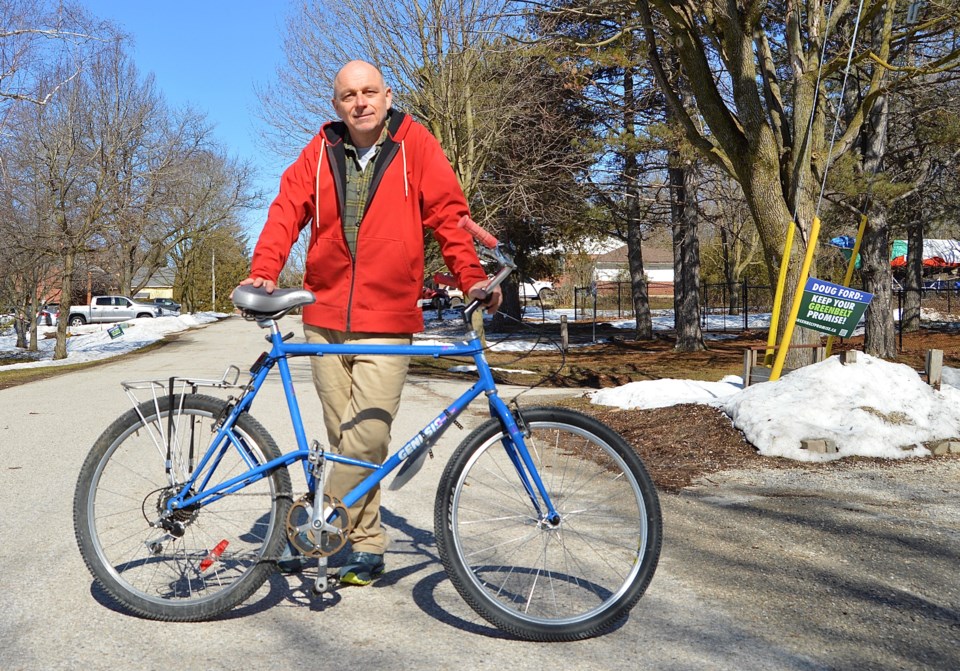If many residents’ daily needs are met with the concept of a 15-minute city in an urban environment, are rural communities left out of the conversation and planning?
The term '15-minute city' was created by French-based university professor and urbanist Carlos Moreno. The concept is simple: residents have access to services they need to live within close proximity to their neighbourhood.
Towns within Wellington County already have aspects of 15-minute cities, it's just not called that. The county's recommended Official Plan review calls it "complete communities."
The required services for complete communities as defined in the county document are:
- Social services
- Policing
- Emergency services
- Recreation opportunities/facilities greenspace (parks, trails)
- Transportation network upgrades
- Childcare
- Solid waste services
Moreno was the driver behind the 15-minute city plan for Paris.
“There is something in Paris though that is aspirational for Fergus and Elora, and that is density,” said Wayne Caldwell, University of Guelph professor in rural planning and development.
“You’ll obviously never achieve the density of Paris. But if you achieve higher density than you can put more people into a location in proximity of services that again captures this notion of walkability and cycling,” said Caldwell.
Places like Elora were on their way to be considered a 15-minute city until zoning bylaws were changed, said John Scott, member of Green Lanes and resident of Elora. Green Lanes is an advocacy group, it supports better urban design that makes better communities.
The 15-minute city concept is closely aligned to the concept of complete communities in the county’s Official Plan Amendment 119, said Sarah Wilhelm, manager of policy planning for the County of Wellington.
Official Plan Amendment 119 is the first amendment for the County’s Official Plan, which leads growth direction in the county over the next 20 years, the physical development of the county and protection of county resources.
The amendment includes policies like complete communities, and mapping growth structure, as goals for future planning. In 2021, council requested the Minister of Municipal Affairs and Housing to consider excluding Puslinch as part of the proposed Greenbelt Plan expansion.
Puslinch is considered a hamlet, hamlets are found throughout protected countryside in the Greenbelt. "The policies for these settlement areas support the achievement of complete communities that are healthier, safer, more equitable and more resilient to the impacts of climate change," said in the Greenbelt Plan from 2017.
“I think what happens in our field and in a lot of other fields, you’re always looking for ways to connect with people and help them understand these concepts and make them something that people connect with,” said Wilhelm.
“I think that 15 minutes concept seems to have really jelled and gained some positive and negative attention,” said Wilhelm.
The aim is to “support a strong rural economy, maintain the character of rural communities, achieve complete communities and serve as community hubs,” states the the County Official Plan Review Recommendation Report.
The Official Plan Amendment 119 has been with the province for approval for the last nine months and Willhelm said she is hopeful a decision will be made soon.
Puslinch is an area considered to be a protected countryside under the provincial Greenbelt Plan.
Recent conspiracies about 15-minute cities have sparked debate as a means for governments to control citizens' movements within a city. Some British MPs, and Alberta businessman Brett Wilson called it climate change lockdowns influenced by COVID lockdowns, on Twitter.
“I think one of our biggest misconceptions is the rural versus urban. The majority of our population is urban,” said Scott. He gave an example of the urban population who live in Fergus and Elora, with the population continuing to grow.
Within 15 minutes doesn’t mean by car, it means by walking, biking, transit or micro-mobility.
Micro-mobility can include an electric scooter, bike or wheelchair, said Scott.
“If I’m living in a small village or hamlet, if there’s a grocery store I can get to that’s walkable from where I live then that’s a net-positive in my view,” said Caldwell.
When Caldwell and his wife would drive through the countryside he would ask her what the population size was. If the population was 3,000 he knew it would have a Tim Hortons and a couple other services.
“In this case the size matters,” said Caldwell. “Does this community have sufficient population base to justify this level of service?”
“So in my view even if we embodied the concept of a 15-minute city as much as we possibly can. There will always be constraints on the range of services that are available in Milverton because it’s only 2,000 people.”
Both Elora and Fergus were founded in 1832, were incorporated as villages in 1858, then merged with Centre Wellington in 1999.
“The cores of most of the towns and villages were established at a time before the automobile was a factor. Fergus downtown, Elora, certainly downtown Goderich,” said Caldwell.
With the infrastructure, the options for travel were by walking or riding a horse and buggy, “which I would say is not so different than being on a bicycle from the point of view of accessibility,” said Caldwell.
“Many of these communities were in some ways the ultimate 15-minute city,” he said. “Granted, we had a different commercial infrastructure at that time.”
